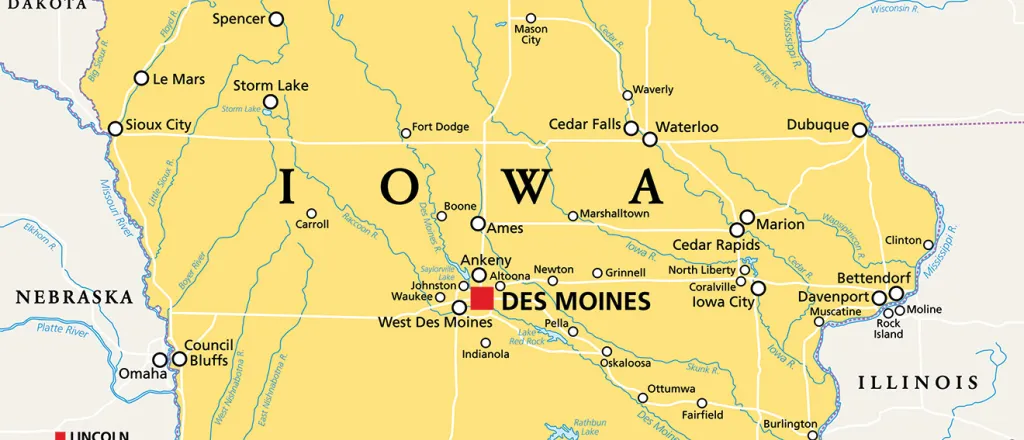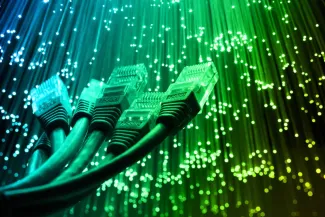Pioneering Research at Iowa State University: A Revolutionary Approach to Energy Efficiency in Data Centers
The future of energy consumption is at a crossroads, with data centers set to account for a staggering 9% of the nation’s energy use by 2030. Researchers at Iowa State University are innovating in this crucial sector, aiming to slash the immense energy needs of data centers through groundbreaking technology.
A Drive for Energy Efficiency
Driven by the sheer magnitude of power consumed by 5.3 billion internet users, which is equivalent to the energy used by 800,000 households, the urgency for robust solutions has never been more pronounced.
 An emerging hub of technological advancements in Iowa.
An emerging hub of technological advancements in Iowa.
Matthew Panthani, an associate professor of chemical and biological engineering at Iowa State, leads a team dedicated to harnessing light rather than heat for power generation in data centers. He notes an interesting trend: “Iowa seems to be a popular place to build data centers. Companies like Meta are drawn by the low electricity prices that wind energy affords.”
The significance of this research cannot be overstated. As data centers proliferate under the demands of emerging technologies like Artificial Intelligence, sustainable solutions are pivotal. By developing atom-thin sheets of silicon-germanium alloys, Panthani’s team aims to create highly energy-efficient semiconductors essential for these facilities.
Transitioning from Fiber Optics to On-Chip Light Sources
Historically, the transmission of data via light has largely been reserved for long-distance communication, with fiber optic technology playing a critical role. However, Panthani emphasizes the challenge of utilizing light on a micro-scale: “The advancement lies in the challenge of enabling scalable, on-chip light sources.”
The materials that Panthani’s lab is focusing on could facilitate this crucial transition. By optimizing both the manufacturability and performance characteristics of these materials, his research aims to break new ground, allowing for efficient data transfer between components within data centers.
 Technological innovations in data transfer.
Technological innovations in data transfer.
The Need for Innovation
As the demand for data services burgeons, the technologies that fuel our digital world must evolve accordingly. The Electric Power Research Institute projects that the power consumption of data centers will only surge as we venture deeper into the decade.
A shift towards energy-efficient semiconductor technology offers a promising pathway forward. The challenge is immense, but the potential rewards—both environmentally and economically—are equally substantial. With the rise of AI applications and next-generation internet services, steering energy consumption in a sustainable direction is more critical than ever.
In Conclusion
The pioneering work being undertaken at Iowa State University highlights a crucial intersection between technology and sustainability. As schools of thought converge on solutions for cleaner energy, Iowa stands poised to be at the forefront of a technological renaissance that could redefine energy efficiency in our increasingly data-dependent world. The implications of this research transcend mere academic interest; it represents a vital step towards a sustainable future in energy consumption.
As Matthew Panthani aptly encapsulates, the focus on developing materials that allow for unprecedented methodologies in energy use must remain a priority. This could be the key to balancing the demands of modern technology with the imperative of ecological responsibility.
For further exploration on this topic, you can visit Iowa and discover how innovative research is reshaping our energy landscape, along with energy consumption statistics that underscore the gravity of these advancements.


 Photo by
Photo by 











